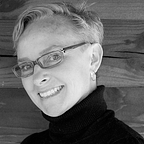Concept 3: Spheres of influence (SEM 2.0)
The theme of “shapes” is emerging in these first three concept essays. We started with a ladder (Arnstein), moved on to a pyramid (Maslow) and are now heading into spheres of influence, courtesy of Urie Bronfenbrenner.
And of course there is a fancier name and acronym we could be using: It’s the “Socio-Ecological Model” (SEM).
I’m hoping Urie won’t mind that his model is about to get a re-brand and a makeover.
Rebrand: Hello “spheres of influence!”
Makeover: Welcome to “SEM 2.0” (two point oh). The 2.0 refers to the addition of an important sphere of influence called “the internet,” which wasn’t around when Bronfenbrenner published his classic essay in 1977.
Bronfenbrenner’s “socio-ecological” model has been widely cited in the past five decades, and is used in several technical disciplines, with education and communication being just two among many. The model describes a set of systems and settings where people interact with one another.
Some people say the broader system looks like an “onion,” with multiple embedded circles, or “spheres” as I am calling them. I will present a modified graphic shortly, and you’ll see why the onion reference pops up. The new graphic adds the internet, “the cloud sphere,” to Bronfenbrenner’s original model, which included four systems:
- A micro-system, with interactions that happen between individuals in an immediate setting (within a family, a workplace, a school, etc.);
- A meso-system, which includes interactions between members of different micro-systems. For example, if a child’s family members interacts with people at her school.
- An exo-system: is an extension of the meso-system, and includes institutions that may not directly influence an individual, but can affect what happens in a specific context. Consider how local media or local and state governments can influence in environment. This influence can affect an individual in ways they may not even realize, through what actions they promote or make possible (like voting), or which actions they may choose to restrict (like voting).
- A macro-system, explains Bronfenbrenner, includes the overarching patterns of cultures and subcultures, and multiple systems (economic, social, educational, legal, and political) A macro-system is a system of systems, in other words. It conveys information and ideology, both implicitly and explicitly. (Bronfenbrenner, “Toward an Experimental Ecology of Human Development,” American Psychologist (1977), p. 515.)
NEW: “SEM 2.0.” What we’re adding here in this essay is the internet-based virtual system, where ideas from all over the globe can be accessed, and have the potential to influence both individuals and systems. True, not all community members can access the virtual system, just as how not all community members can access schools, or public infrastructure (water systems, etc.)
I am defining the “virtual” system as including internet-based content but also other digital content that may be shared via mobile phone, transfer via secure digital (SD) cards, etc. Content may begin online, and then “travel” through other digital means without the internet. I am including all of this type of content as part of the “virtual system,” which may influence and/or persuade, thereby potentially affecting the actions of others.
As we design and plan social change interventions, the Socio Ecological Model (Original and 2.0 versions) can both help us think of the “spheres of influence” where individuals, families and community members interact. We all live within a context, within a system. Our system is influenced by other systems, and now by virtual systems as well. The design of our interventions can include actions within several spheres simultaneously. There are limits to the resources we may have, whether human, social or financial. If limited resources make it impossible to design for action in multiple spheres, it will still be important to know the amount and diversity of “competition” for time, attention and influence is out there, within the range of spheres of influence.
The interconnected world we live in can be both a curse and a blessing. We have seen how the COVID pandemic has brought with it an “infodemic,” a double affliction of misinformation and “too much information.”
Understanding the “interconnected” nature of various spheres of action and interaction and accounting for the influence of virtual systems, can help us improve how we promote positive social change.
You may be thinking: “Of course online content can influence offline decisions and actions!”
Because this is so obvious to many, we’re proposing “SEM 2.0” as a simple update for Bronfenbrenner’s socio-ecological model, to account for the internet-age. While not everyone in the world has access to the internet, the internet is nonetheless shaping the world we live in, for better or for worse.
This essay is part of “The Social Change Cookbook.” Please send suggestions to: kgreiner-at-gmail. Comments and questions also welcome below.
